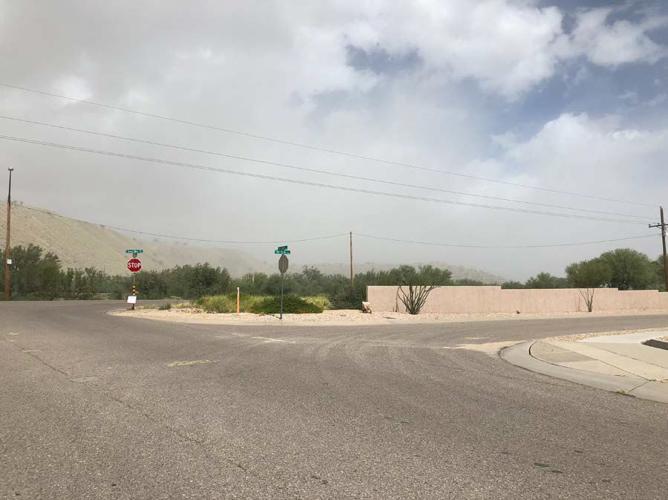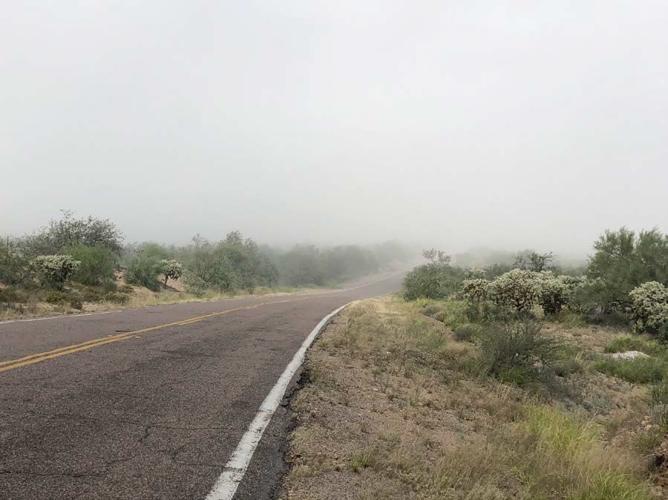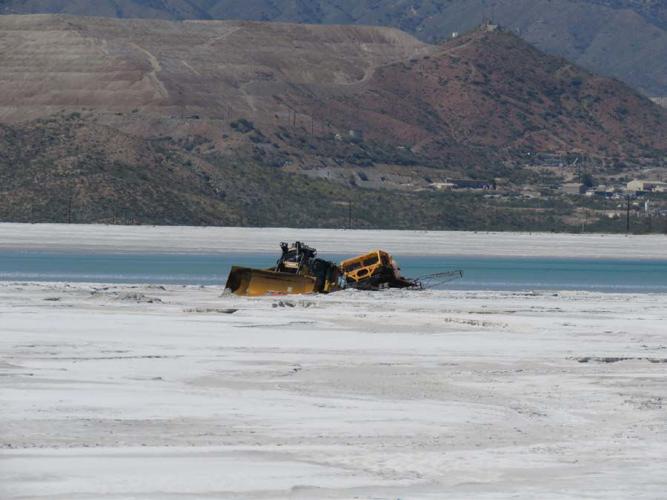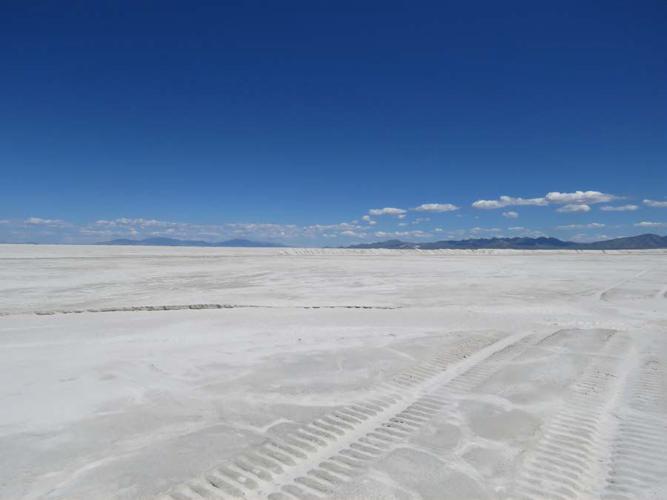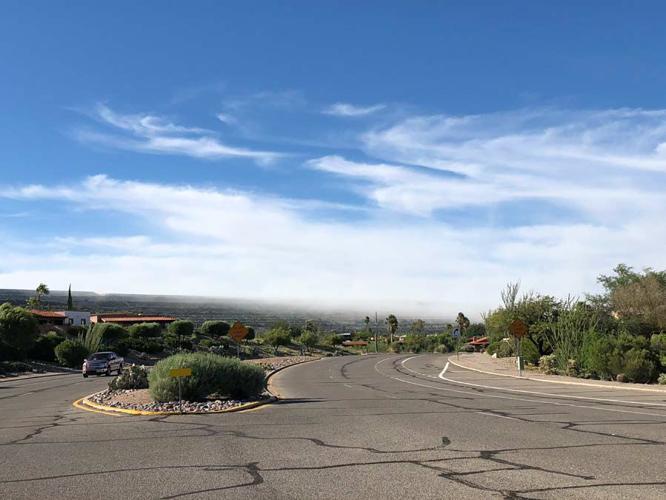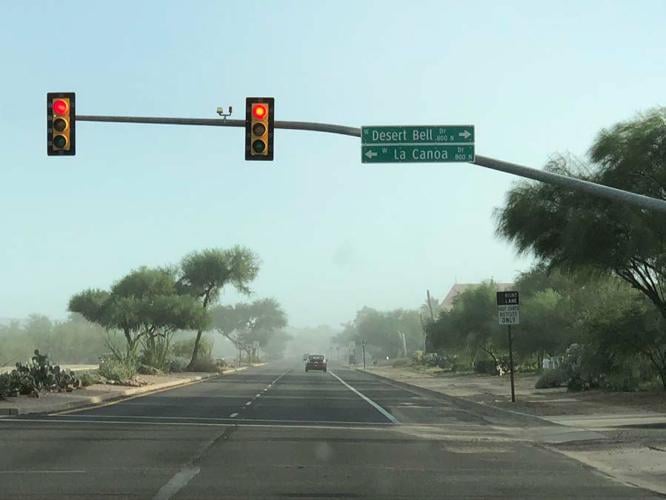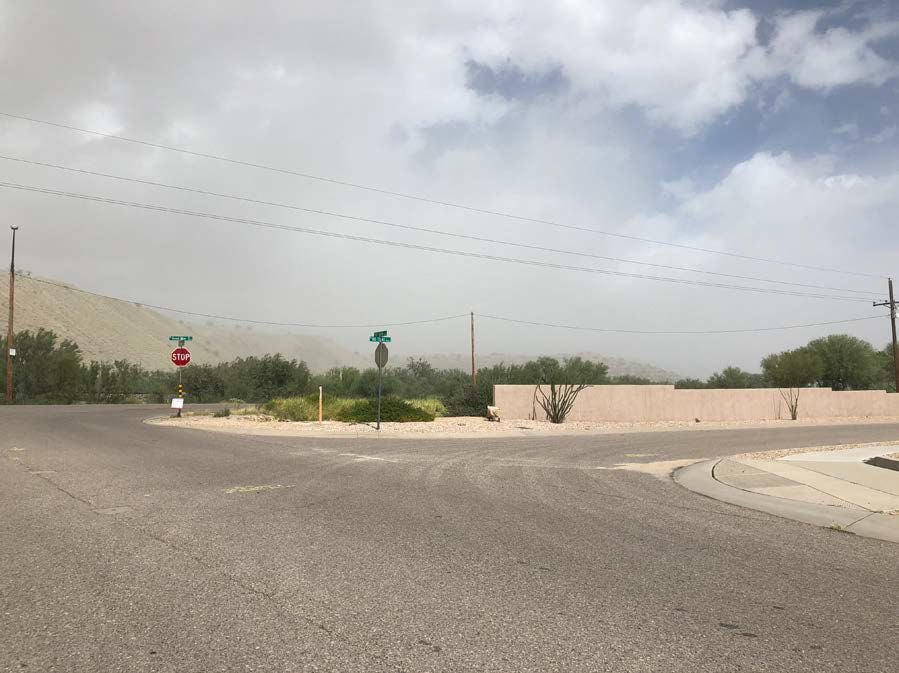Mining company Freeport McMoRan faces charges from Pima County that blowing tailings from its Sierrita Mine in Green Valley violated county law and the company’s air quality permit.
The county Department of Environmental Quality issued a formal notice of violation against Freeport. County officials say this is the most serious case of blowing dust from mine tailings in that Green Valley-Sahuarita area, south of Tucson, of any of five such Freeport violations since 2013.
This time, “there were so many people affected calling in, saying their health is affected, their homes were completely covered in dust,” said Ursula Nelson, the county environmental agency’s director.
“This is on a whole different level than we’ve seen in the past.”
The tailings dust left the mine site those days in violation of a permit requirement that the dust not leave the mine’s property, the county’s violation notice said. Tailings blew across Duval Mine Road north of the mine on six days between Sept. 18 and Nov. 6, the notice said.
In addition, concentrations of the tailings dust in the air on one of those days, Oct. 11, were up to three times thicker than allowed under the mine’s permit, the county said.
The permit requires the air be no more than 20 percent opaque. That day, the air near the tailings ranged from 23 percent to 61 percent opaque at various times, the notice says.
The violation notice was filed Nov. 13, after the environmental agency received 63 telephone and online complaints about the dust this fall.
That’s the most complaints it’s received about tailings dust since Asarco’s neighboring Mission Mine had three rounds of dust violations in 2009 and 2010, said Beth Gorman, a program manager for the county DEQ.
Those violations triggered $450,000 in penalties for Asarco —$100,000 in fines and $350,000 in contributions toward county environmental projects.
Freeport has responded to more than 750 requests for information about the dust.
It also arranged cleaning services or reimbursement for approximately 490 homeowners who requested it for their homes, said Linda Hayes, the company’s vice president of communications.
Freeport has reported each excessive dust event to the county, expressed regret that the incidents occurred and said it is working closely with residents to help clean up the dust.
It has blamed the problem on weather, including excessive winds and rains. The rains in early October were so heavy that the company’s own vehicles, headed to the area to mitigate the tailings dust, got stuck in the muddy tailings for nearly a month.
Freeport has also committed to coming up with solutions to prevent dust problems of this magnitude from flaring again.
But in an email to the Arizona Daily Star, a Freeport official declined to say whether the company will challenge the county’s violation findings. Legally, the company has 30 days to respond to the county’s violation notice and to say if it will appeal the findings to the county Air Quality Hearing Board.
Freeport also is supposed to say what steps it took to try to prevent the dust incidents and what prevention measures it will take.
The company acknowledges that dust levels during some of these incidents exceeded the 20 percent legal limit. But because resolving the violation notice is a complicated, multi-step process, “It would be premature for us to make a decision or comment on our position until we are further along,” Hayes said.
“That said, we do not challenge the fact that these events occurred and deeply regret the impact they have had on our neighbors,” Hayes said in an email to the Star.
Once the county gets Freeport’s response, it will determine if a fine is warranted, Nelson said. The county’s maximum fine for such violations is $10,000 per day the violations exist, and the county considers other factors in deciding the level of a fine.
“Large sheets of dust”
Sue DeKoker first saw the dust on Oct. 7, when she and her husband were driving back from a birdwatching trip to Madera Canyon. They could see it “literally sheeting off the mines in large sheets of dust,” she recalled. When she got home and then drove to a grocery store, “It was still circling around. It was still windy.”
DeKoker, who has a mild case of asthma, suffered coughing spells for two weeks, she said. Her husband endured them for a week.
The wayward tailings left a thick coating on the DeKokers’ outside furniture, two covered patios and on virtually every bush and tree at their home in Green Valley’s Las Campanas subdivision, she said.
When she called Freeport to seek help with the cleanup, the company “called back right away and was very solicitous about it, and apologetic,” DeKoker said. A couple days later workers for the company showed up and did a lot of cleanup work.
As for the tailings’ health impacts, studies done of both Freeport and Asarco mine tailings in the 2000s and in 2010 drew similar conclusions: That tailings don’t contain above-normal levels of toxic heavy metals, but that breathing tailings dust can be bad for people with respiratory problems, just like non-tailings dust is.
A 2010 University of Arizona study found Asarco’s tailings contain many more small particles than found in natural dust — particles that can lodge in lungs, aggravate existing respiratory problems and force asthmatics to the emergency room.
Depending on the dust levels that people living near the tailings breathed during the storms, the dust can provoke or aggravate symptoms of asthma and bronchitis, including coughing and wheezing, a UA researcher said at the time. It also can cause irregular heartbeats, changes in heart rate and shortness of breath, the researcher said.
Studies of Freeport tailings were done in 2006 and 2007 for Freeport and the Arizona Department of Health Services.
8 hours to clean up tailings
Green Valley resident Marvol Barnard complained to Pima County officials that mine tailings dust had “inundated” her family’s home, the same day the DeKokers saw the dust.
“Horrible dust, coming off the mine, coating our back patio like I’ve never seen before,” Barnard told the county. Another Green Valley resident, Patrica Flowers, complained of “fine dust everywhere, including my eyes” from mine tailings the following day, Oct. 7.
And it took eight hours just to clean up the tailings dust that blanketed the home of William Lauer and his wife in Green Valley’s Esperanza Estates subdivision, he said in a telephone interview.
On Oct. 6, dust blew through the home’s Arizona room because the family had left the door open, not realizing a dust storm was coming, he said. At times when they looked outside, dust was so thick the couple could only see a half-block away, they said in a complaint filed with the county.
“I walked into the Arizona room and I saw a dust cloud. All of a sudden we realized, it was all over the floor. You couldn’t just vacuum it up. You had to get down and wash it off the floor,” said Lauer, who from his back door can see the mine, one-half to three-quarters of a mile away.
The company paid $300 to reimburse the couple for time spent cleaning, he said, and sent someone to their house to wash the outside windows and walls.
“There was no complaint from them whatsoever,” Lauer said in the interview. “It was an absolutely good response.”
The online complaint the family filed with Pima County was more critical of the dust. “It is unhealthy, unsightly, dirty, very slippery on tile floors and very difficult to clean up! The mines need to have better control of their product and by-products!”
Dust suppressant applied
Explaining the tailings dust releases, Freeport’s Hayes told the Star that Sierrita was hit by “significant storm events” with wind gusts exceeding 40 mph. One storm exceeded 3 inches of rain while another brought more than an inch, county records show.
“Though we work diligently to ensure these events do not occur, heavy rains in the area impacted the soil control efforts used to manage dust,” she said.
To prevent a rerun of these events, the company is performing around-the-clock application of dust suppressant material, using more water trucks and having people manually apply dust suppressant in the areas too soft for heavy equipment, Hayes said.
“We also are working with the Pima County Department of Environmental Quality to identify possible changes to our dust management practices. These include researching different dust suppressants and improving application methods,” Hayes said.

In a complaint filed with Pima County, a Green Valley couple said sometimes the tailings dust was so thick they could only see a half-block away.

A bulldozer and an all-track vehicle that spreads magnesium chloride, which forms a crust on top of the tailings to keep them from blowing dust around, are stuck in the tailings after a rain in September.

Pima County Department of Environmental Quality inspection report on Freeport-McMoRan Sierrita Inc. Photo taken Sept. 26, 2018.

Pima County Dept. of Environmental Quality inspection report on Freeport-McMoRan Sierrita Inc. Photo taken Oct. 6, 2018.

Pima County Dept. of Environmental Quality inspection report on Freeport-McMoRan Sierrita Inc. Photo taken Oct. 6, 2018.

Pima County Department of Environmental Quality inspection report on Freeport-McMoRan Sierrita Inc. Photo taken Oct. 6, 2018.


